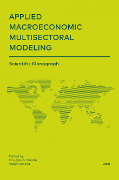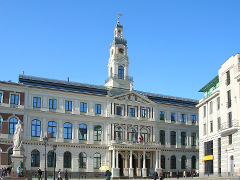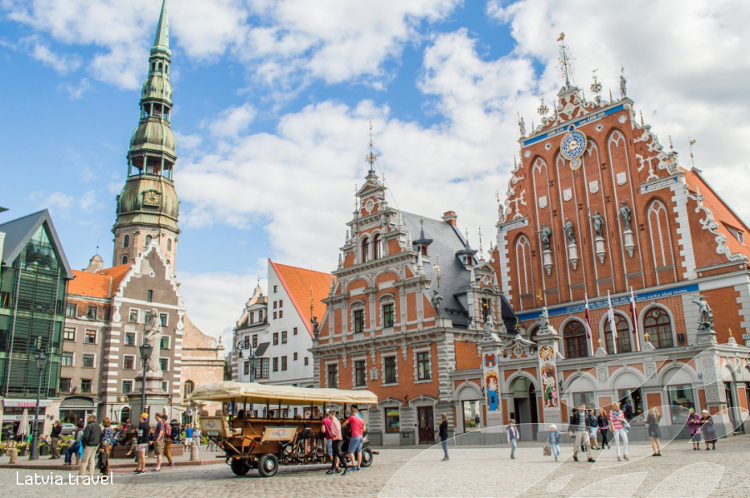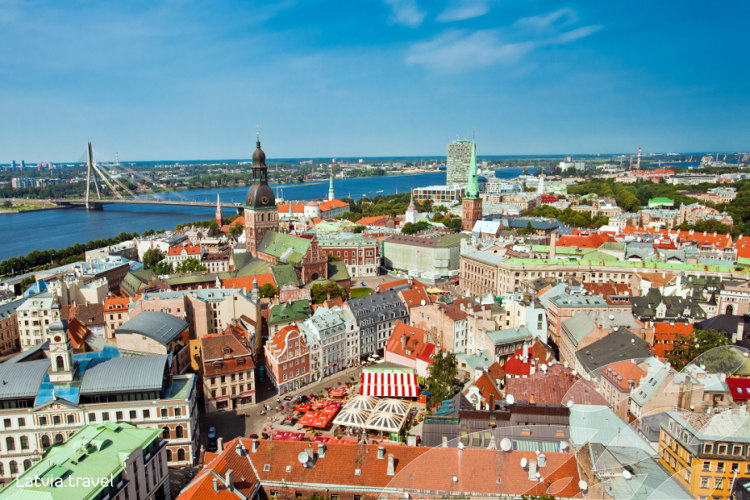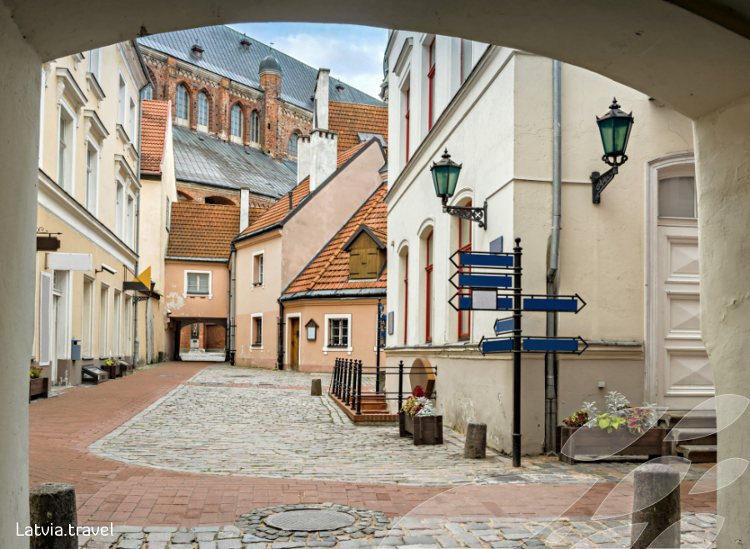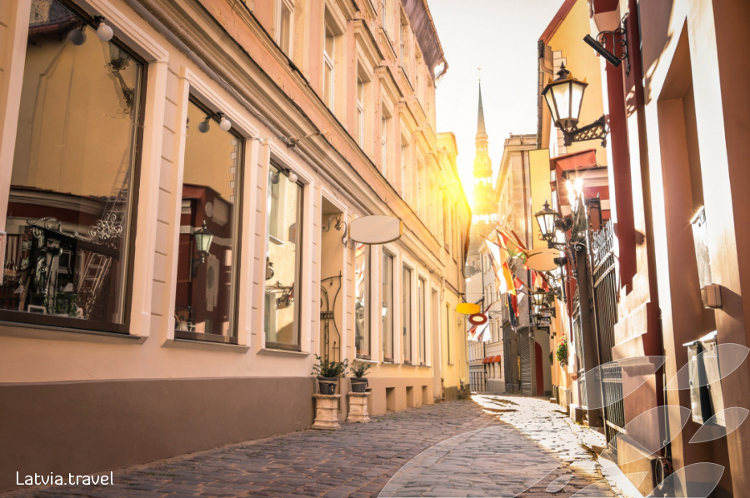The Twenty-Fifth Inforum World Conference in Riga, Latvia
The 25th Inforum World Conference took place in Riga from August 28 through September 2, 2017. The conference hosts were Inforum's Latvian partners at Riga Technical University. Presentations, papers, photos, and other information are listed below.
Additionally, selected papers from the 2015 (Bangkok), 2016 (Osnabruck), and 2017 (Riga) Inforum World Conferences have been collected and edited by Velga Ozalina and Doug Meade in the conference volume entitled Applied Macroeconomic and Multisectoral Modeling.
Monday, 8/28/2017
Morning Session
The morning began with brief presentation by Talis Juhna, Vice-Rector for Research at Riga Technical University. This was followed by introductory remarks by Remigijs Pocs and Doug Meade. Following this was an update by the respective attending countries on their activities during the past year. The first two presentations were presented by Doug Meade, as Clopper and the Japanese authors were absent from the conference.
Clopper Almon (USA) - The Gwx Story (Slides)
Clopper Almon (USA) - The Craft of Economic Modeling
Mitsushito Ono, Yasuhiko Sasai, and Takeshi Imagawa (Japan) - Economic and Industrial Forecast of Japan to 2030 (Slides)
Peter Bozso (Hungary) - A Summary of the Modeling Activities of GKI
Afternoon Session
Rossella Bardazzi and Leonardo Ghezzi (Italy) - International Competitiveness and Investment: Simulations with BTM
David Mullins, Phindile Nkosi, and David Mosaka (South Africa) - Assessing the Economic Contribution of Labour Migration in South Africa by a Dynamic Multisectoral macroeconomic Model
Shantong Li, Jianwu He, and Jing Wen (China) - Structural Changes of the Chinese Economy - Based on Input-Output Analysis
Rafael Uzyakov (Russia) - Possibilities of the Structural Analysis of the Russian Economy Dynamics in 1991-2013 Using the IO Instrument
Doris Buenemann, Marc Ingo Wolter, and Stefanie Bauer (Germany) - Company Demographics in Germany
Evening
On Monday evening, the participants were treated to a tour of the old city of Riga, which included interesting descriptions of the many Art Nouveau buildings in Riga.
Tuesday, 8/29/2017
Afternoon Session
Anett Grossmann and Frank Hohmann (Germany) - PortableDyme Workshop
Alexandr Baranov, Victor Pavlov, and Iuliia Slepenkova (Russia) - Construction of the Dynamic Input-Output Model of the Russian Economy with a Human Capital Block and Problems of its Information Support
Lucja Tomaszewicz and Joanna Trebska (Poland) - Financial Input-Output Multipliers
Wednesday, 8/30/2017
Morning Session
Yaxiong Zhang (China) - Compilation of the 2012 Multiprovincial IO Tables for China
Radford Schantz (USA) - Trade in Value-Added and Comparative Advantage
Toshiaki Hasegawa (Japan) - Trade in Value-Added and Labor Productivity
Asiya Brusentseva and Vadim Potapenko (Russia) - PADS for Russia: Tentative Results and Embedding into the Russian Interindustry Model
Alexander Maslennikov (Russia) - Global Vector Autoregression: Possibilities for Application to the Input-Output Modelling Framework
Thursday, 8/31/2017
Morning Session
Gaygysyz Ashyrov, Tiiu Paas, and Maryna Tverdostup (Estonia) - Comparative Analysis of the Marine Sectors: An Input-Output Analysis of Neighboring Countries Estonia and Finland
Michal Przybylinski (Poland) - The Role of an Industry in the Economy
Douglas Meade (USA) - The Right Tax? Explorations of U.S. Tax Reform
Emilia Fraszka-Sobczyk, Michal Przybylinski, Iwona Swieczewska, and Joanna Trebska (Poland) - Long-term Development of the Polish Economy: Putting Scenarios Together
Alexander Shirov (Russia) - Estimation of the Multiplicative Effects of International Projects
Meral Ozhan (Turkey) - Analyzing Inflationary Effects of Price Adjustments in Energy Markets Using an Input-Output Model: The Case of Turkey
Afternoon Session
Iwona Swieczewska (Poland) - Determinants of TFP Growth in Sectors of the Polish Economy: Long-term and Short-term Perspective
Patricio Aroca (Chile) - The Importance of Imports in Chilean Mining Exports
Velga Ozolina, Astra Auzina-Emsina, and Remigijs Pocs (Latvia) - The Use of the Latvian Models for Competitiveness Analysis
Friday, 9/1/2017
Morning Session
Closing Session, and Discussion of the Next Conference - Various issues concerning software development, new members and training were discussed, and Michal gave a presentation for next year's World Conference XXVI in Lodz, Poland.
Afternoon Session
Rundale Palace Tour
The history of Riga, the capital of Latvia, begins as early as the 2nd century with a settlement at a natural harbor
not far upriver from the mouth of the Daugava River. Later settled by Livs and Kurs, it was already an established
trade center in the early Middle Ages along the Dvina-Dnieper trade route to Byzantium. Although Christianity had
come to Latvia as early as the 9th century, Riga was founded in 1201 (over 800 years ago) by Albert, a German
bishop. In 1282 the city joined the Hanseatic League. In 1510, Riga became the first place in the world to decorate
a Christmas tree. In 1629, German rule was replaced by Swedish rule, and Riga became the biggest city in the
Swedish Kingdom. In 1710, Riga came under Russian rule, but the German influence was still present until the
establishment of an independent Latvia. The economic boom and rapid constructional developments at the
beginning of the 20th century made Riga one of the most prominent Art Nouveau cities in world and one of the
most prosperous in the Russian Empire.
On 18 November 1918, Latvia proclaimed its independence and stayed a free country until 1940 when it was occupied by the Soviet Army, which was soon replaced by the Nazi occupation, only to be retaken by the Soviets again at the end of the Second World War until 1991, when Latvia regained its independence from the Soviet Union. All these diverse historical periods have left their footprints in the architecture of Riga, which include old Gothic churches, built by founders of Riga, medieval buildings in the Old Town, exquisite Art Nouveau, as well as wooden buildings. In 1995, the historic center of Riga was included in the UNESCO World Heritage list.
About Us | Site Map | Contact Us | Page last updated: November 5, 2020

